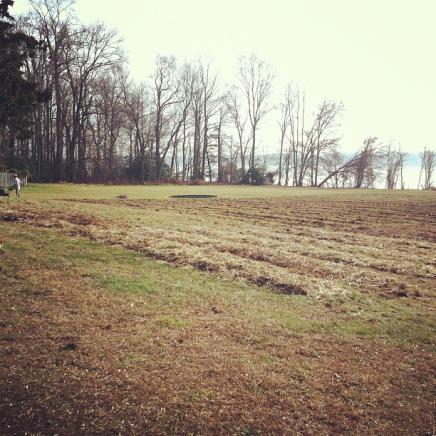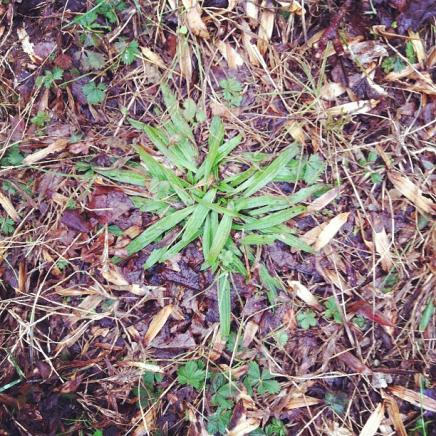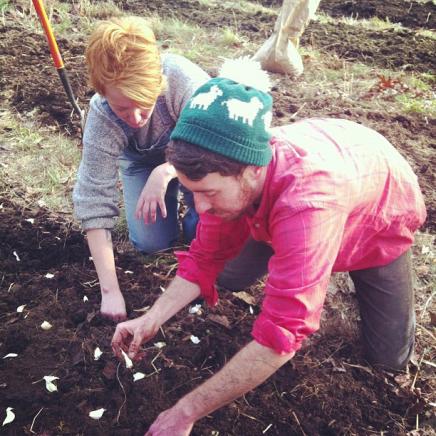Yesterday was an historic day for us farmers here at Seven Arrows… We finally finished plowing up the field.
Over the past several weeks, we’ve spent some time marking out, planning, re-marking, and re-planning, and all the time looking down toward the water wondering how on earth we were going to get that darn field prepared before the ground froze up. We started with shovels, turning over grasses and clovers and plantain and sorrel and henbit all grown into a thick sod. In two full days of work, Neil, Meg, and I had managed to turn over only about 3% of our total planned vegetable plot. Meaning, we’d need more than two full months of digging with shovels, every day, all day, to get it done.
Plowing, or more broadly, tillage, seems to have become a hot topic lately among farmers and gardeners. I’ve been hearing about no-till growing more and more over the past few years and have heard of some interesting and promising results here and there. But to be clear, I believe that tillage and tilling deserve their rightful place in agriculture… it just has to do with scale. There are distinct differences between a draft plow and a walk-behind tiller, and between a walk-behind tiller and a tractor-pulled plow/ripper/crumbler/finisher. And there’s no way we could have a serious growing operation next season without some tilling.
For us, tillage originally involved spades, shovels, and forks. Then, through bartering with a great new friend and neighbour, we managed to borrow an old walk-behind tiller. I’m not a big petrol head – a real part of why I decided to pursue faming has to do with fossil fuels – but if it weren’t for that borrowed piece of machinery which in all used up six gallons of gasoline across a half-acre, we would still be out in the field digging. The fact that we used some gasoline to help with the very initial plowing of our field is something that won’t keep me up at night, but I do want to think about other human-, draft-, or no-till-powered ways to prep a field quickly and efficiently. Meg and I have joked about hitching a plow to a wether (castrated male goat), but I still really think about testing it someday.
Our soil is a lovely sandy clay with lots of worms. But it needs some good love to make the kind of intensive growing we have planned possible. We are adding years worth of composted leaf-mold, composted right here on the farm from trees right here on the farm thanks to our landscaper pal Catarino, organic amendments like kelp and alfalfa and spent grain from our friends nextdoor at Carton, and droppings and soiled bedding from the critters. By next spring we will pull back mulch covers and dig into some serious black gold, let me tell you.
With initial tillage finished, we sowed field peas and wheat as cover crops in certain sections to help out-compete and smother some of the turf. It’s cold out, I know, but with a good soaking rain last night and some row cover to boost soil temps, I think we can eke out a decent germination. Experiment and see what happens, that’s my motto.
We also planted out garlic, our first crop for the 2013 season.
We chose to do a mix of softneck storage and heirloom hardneck varieties. Can’t wait for some scapes.
It was a week full of milestones: I moved, fields are prepped for winter, garlic is in. We celebrated with a trip out to Carton to fill up some growlers and had a big pot of goat mac ‘n cheese for dessert.
]]>





